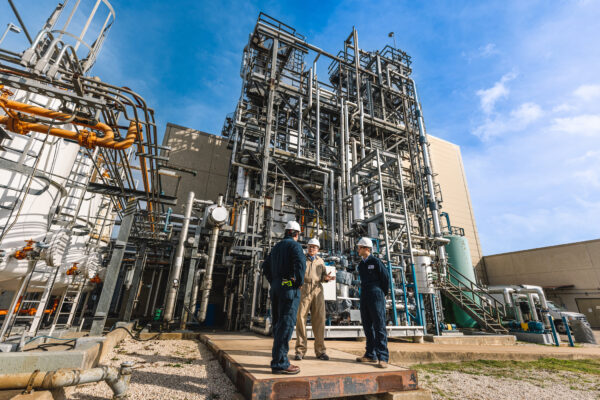AUSTIN, Texas — Honeywell plans to commercialize carbon capture technology created by researchers at The University of Texas at Austin that holds the promise of significantly reducing carbon dioxide emissions from many industrial sources.
The technology reduces the cost of capturing carbon dioxide emissions from power plants and other heavy industrial processes before they make it into the atmosphere. UT Austin has established itself as a leader in carbon capture technology during the past two decades, primarily through the Texas Carbon Management Program (TxCMP).
“We are thrilled that our decades of research have led to carbon capture technology that can significantly reduce carbon emissions,” said Gary Rochelle, professor in the McKetta Department of Chemical Engineering and leader of TxCMP at UT Austin. “The licensing agreement with Honeywell enables us to commercially scale this in ways that can make major contributions toward zero-emission efforts to address global warming and to reduce pollutants in surrounding communities,” Rochelle said.
Rochelle and his team have developed a second-generation amine scrubbing system through years of research and analysis. The improved performance from this solution unlocks the ability to tackle “hard to abate” industries such as steel, cement, and chemical plants; and coal, natural gas and bio-energy power plants.
Honeywell plans to scale this technology and apply it around the world.
Rochelle believes the opportunity with this technology is enormous.
For just a single typical power plant, applying the advanced solvent carbon capture technology would enable the capture of approximately 3.4 million tons of carbon dioxide annually. That’s equivalent to removing nearly 735,000 cars from the road each year.
This CO2 removal technology can be retrofitted within existing plants or included as part of a new installation. In this process, carbon dioxide is absorbed into an amine solvent and then sent to a stripper, where the CO2 is separated from the solvent. The CO2 is then compressed for geological sequestration or used for other purposes.
As of 2020, 40 million metric tons per year of carbon dioxide was captured and stored around the globe, according to the International Energy Agency (IEA). However, there’s much more work to do. In order to align with the IEA Sustainable Development Scenario, which provides a road map to limit global temperature rise to less than 1.65 degrees Celsius, carbon capture and storage project capacity must increase more than 20 times to enable capture of 840 million metric tons per year of carbon dioxide by 2030.
The University of Texas at Austin is committed to transparency and disclosure of all potential conflicts of interest. The university investigator who led this research, Gary Rochelle, has submitted required financial disclosure forms with the university. Rochelle will be paid for consulting services to assist Honeywell in its commercialization of the technology described in this news release, and the licensing agreement will accrue financial benefits to the university.




